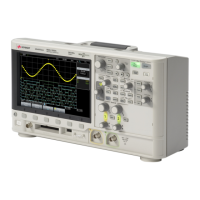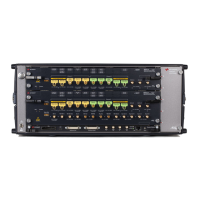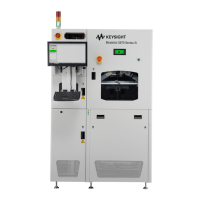Getting Started 1
Keysight InfiniiVision 2000 X-Series Oscilloscopes User's Guide 33
7 Connect probes to all other oscilloscope channels (channel 2 of a 2-channel
oscilloscope, or channels 2, 3, and 4 of a 4-channel oscilloscope).
8 Repeat the procedure for each channel.
Learn the Front Panel Controls and Connectors
On the front panel, key refers to any key (button) you can press.
Softkey specifically refers to the six keys that are directly below the display. The
legend for these keys is directly above them, on the display. Their functions
change as you navigate through the oscilloscope's menus.
For the following figure, refer to the numbered descriptions in the table that
follows.
Perfectly compensated
Over compensated
Under compensated

